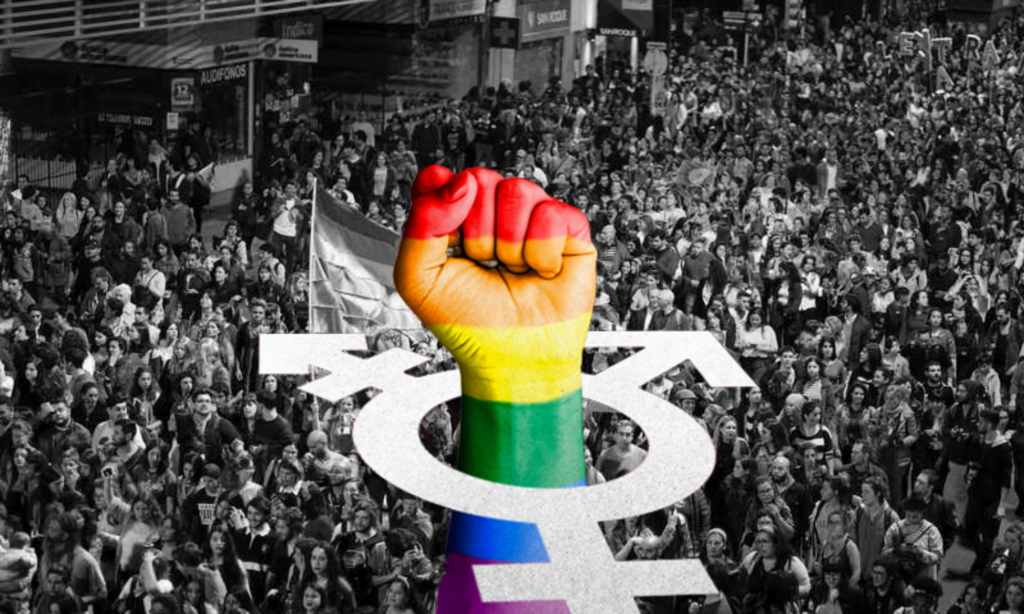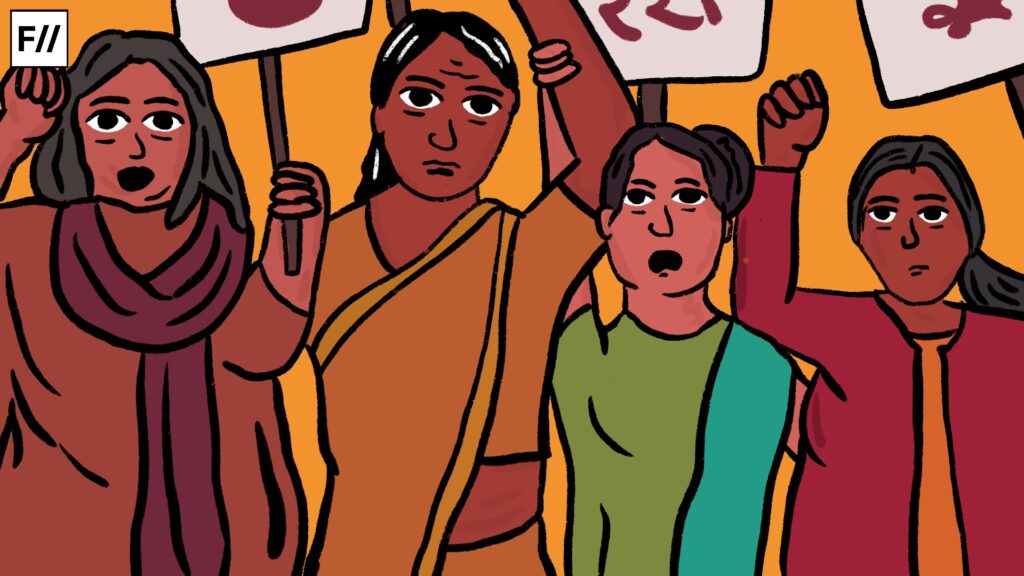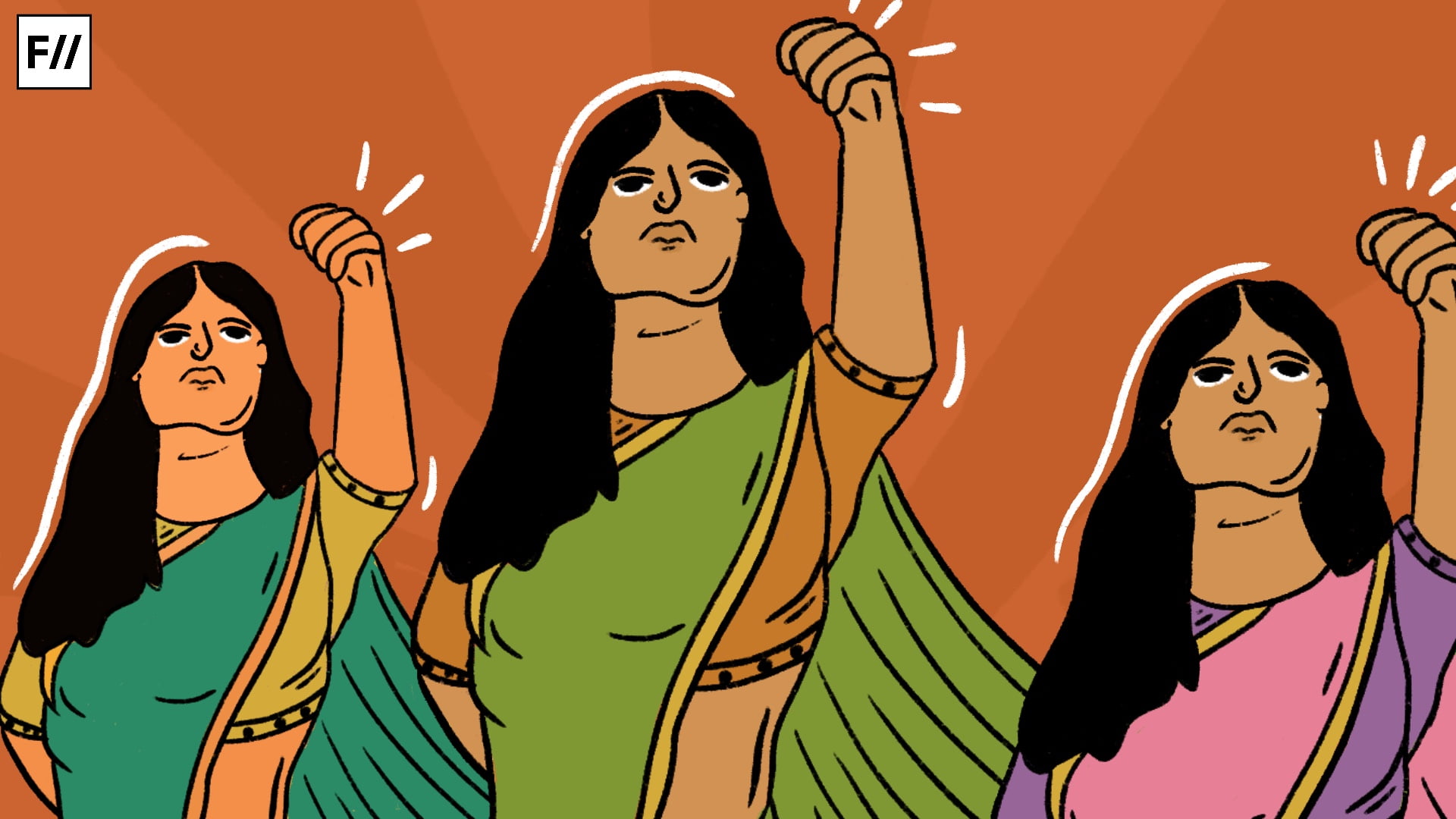Trigger Warning: Mentions Gender-Based Violence and Rape
Drawing on studies examining at least two forms of violence, a 2014 paper highlights that a median of 41% of women reports experiences of domestic abuse in India. In 2018, a poll ranked India as the most unsafe country for women. More recently, in the World Economic Forum’s 2021 Global Gender Gap Report, India ranks 140 out of 156 countries in gender inequality.
Historically, recognition of gender-based violence (GBV) has been facilitated on an international scale by treaties such as the 1979 Convention on the Elimination of All Forms of Discrimination Against Women and the 1993 Declaration on the Elimination of Violence Against Women. Legal and social reform has, however, been brought about by organised feminist movements on both local and national levels.
Historically, recognition of gender-based violence (GBV) has been facilitated on an international scale by treaties such as the 1979 Convention on the Elimination of All Forms of Discrimination Against Women and the 1993 Declaration on the Elimination of Violence Against Women. Legal and social reform has, however, been brought about by organised feminist movements on both local and national levels.
The need for a feminist lens in gender-based violence policy-making
Last year, research led by Professor Akshay Mangla concluded that dedicated women’s help desks in police stations facilitated an increase in the registration of crimes against women. Of the 180 police stations across Madhya Pradesh that were included in the study, those with women’s help desks successfully registered 14.1% more cases of violence against women than those without. While the investigation of frontline institutions is necessary, existing research and ongoing projects appear unwilling to acknowledge the limits of policing for improvement in public welfare and rarely the subject from a feminist lens.

A recent ORF study by Farheen Nahvi makes an interesting case for deploying feminist frameworks to approach GBV policymaking and legal reform in India. Using secondary data analysis, it surveys social and legal dimensions and makes recommendations from a feminist standpoint.
The 2012 Delhi case emerged as a moment of crisis that cultivated collective reflection by virtue of the outrage it caused on a national as well as an international scale. Even medical decisions taken in the wake of the instant media attention that the case received were politicised. The perpetrators were caught: the juvenile convict was released and one of the rapists was found dead in his prison cell. The remaining four men were sentenced to execution in 2020.
The first section centres on intersectionality and underscores the necessity of assessing the collective impact of various markers of identity. Citing a 2011 Minority Rights Group report, which observes how Dalit women remain subject to the triple burden of marginalisation owing to gender, caste, and class, the ORF study makes a contrast between public response to the 2012 Delhi gang-rape case and the 2002 Bilkis Bano gang-rape case to foreground the importance of taking intersectionality into consideration.
The necessity of recognising intersectionality
The 2012 Delhi case emerged as a moment of crisis that cultivated collective reflection by virtue of the outrage it caused on a national as well as an international scale. Even medical decisions taken in the wake of the instant media attention that the case received were politicised.
The perpetrators were caught: the juvenile convict was released and one of the rapists was found dead in his prison cell. The remaining four men were sentenced to execution in 2020. In contrast, stands the gang-rape case of Bilkis Bano during the 2002 anti-Muslim riots in BJP-led Gujarat. Last year, the BJP government, led by the current Prime Minister Narendra Modi, approved the premature release of the eleven men convicted in the gang rape case of Bilkis Bano in 2002.

Abolitionist feminists have urged the reconsideration of incarceration and imprisonment as responses to systemic violence, including GBV, in the last few decades. Whether or not execution and life imprisonment are legitimate measures to facilitate grassroots change remains highly contested today. In the aforementioned cases, however, an uncritical abolitionist stance isn’t enough to justify the release of convicted men on grounds of their age and ‘good behaviour’.
Also Read: Gender-Based Violence Is A Global Pandemic: KEM Report
The difference in the outcomes of the two cases, with one ending with the execution of convicts and the other ending with the premature release of the convicts, is influenced by the difference in the social identity of the involved women. The Bilkis Bano case cannot be understood in the absence of factoring in her religious identity, given that the rioters actively targeted the Muslim community in the violent pogrom of 2002 in Gujarat. The fact that the eleven men were released on 15th August, India’s Independence Day, by the BJP government further confirms the continued politicisation of the case, thereby sending a signal of who gets to be ‘free’ and who doesn’t.
Limitations of existing legal reforms and recommendations
The ORF study’s second section enlists, summarises, and identifies the limits of key proceedings that introduced legal reforms for addressing sexual violence. The landmark cases include the 1972 Mathura rape case, the 1997 Vishaka case, and the 2012 Delhi gang rape case.
Recognising that both GBV and policymaking emerging in response to it exist in the larger culture of systemic discrimination against women, the study calls for increased investment in the prevention of violence. It adds that the classification of only women as ‘victims’ remains unhelpful, not only because it refuses to acknowledge survivors who don’t identify as women, but also because it fosters an ‘us vs them’ mentality, making many people sceptical of and resistant to meaningful changes in the law.
The study criticises the prohibition of prosecution against armed forces for custodial rape, the lack of provision for anonymous complaint registration in the workplace, and a general unwillingness to acknowledge the limitations of only legislative measures to tackle the perpetuation of child marriage.

Recognising that both GBV and policymaking emerging in response to it exist in the larger culture of systemic discrimination against women, the study calls for increased investment in the prevention of violence. It adds that the classification of only women as ‘victims’ remains unhelpful, not only because it refuses to acknowledge survivors who don’t identify as women, but also because it fosters an ‘us vs them’ mentality, making many people sceptical of and resistant to meaningful changes in the law.
The study’s final recommendation emphasises the extension of gender-sensitivity training to combat internalised gender biases among judicial personnel, law enforcement personnel, healthcare personnel, and personnel operating helpline services.
The study shows that policymaking decisions on sexual violence tend to emerge as a response to particular incidents, especially ones that provoke national outrage and invite international attention. The 2012 Delhi gang rape case is a case in point. Such an approach is unsustainable in bringing about the reforms needed to counter the persisting reality of sexual violence. The study suggests that such an approach must be replaced with an alternative approach that focuses on introducing well-researched policies, is informed by the input of NGOs, academic institutions, and other research institutions, and is actively invested in consistent follow-ups.
Also Read: Hypermasculinity And Gender-Based Violence In Sports
In its final section on action-based recommendations, the study questions the legal immunity granted to armed officers, who, even now, cannot be prosecuted without sanction from the central government. It, then, calls for regular audits to assess the compliance and efficiency of existing Acts, and the evaluation of resource allocation and the nature of collaboration between civil society and the state to support rehabilitation (for instance, the rehabilitation of women escaping GBV). It identifies resource allocation as another priority for the facilitation of implementation: the 181 helpline, for instance, is a commendable undertaking, but, sadly, lacks the infrastructural resources to become effective.
The study’s final recommendation emphasises the extension of gender-sensitivity training to combat internalised gender biases among judicial personnel, law enforcement personnel, healthcare personnel, and personnel operating helpline services.
About the author(s)
Mridula Sharma is a researcher and a writer. Her work lies in the intersection of feminist theory, postcolonial studies, and popular culture.





